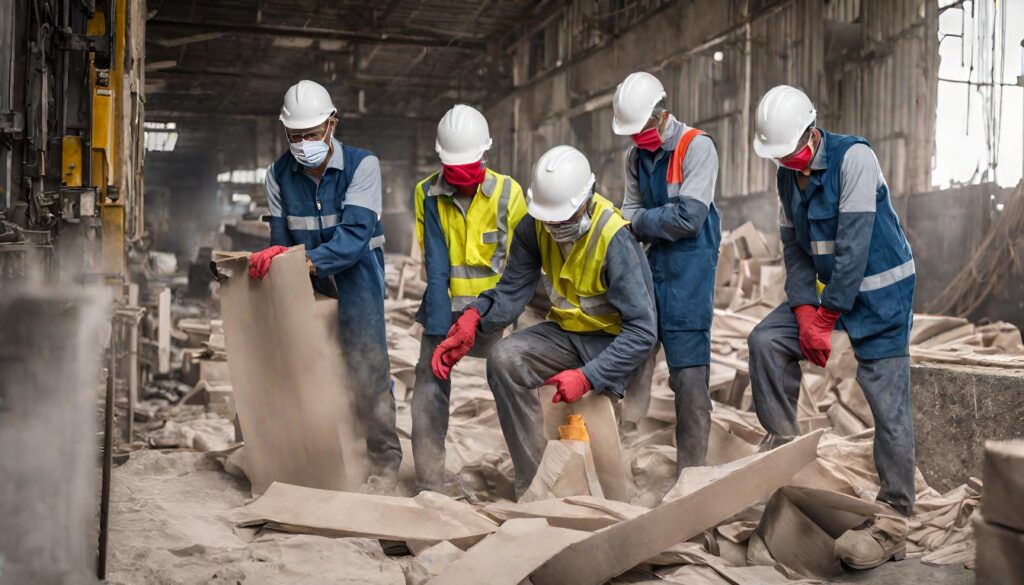By. Hammam Elmahi Instructor/Trainer (Bilingual English & Arabic) | MBA | BSc. Electrical Engineering | PMP® | PMI-RMP®| NEBOSH IGC | IOSH MS |
Introduction
Occupational safety and health focuses on preventing harm and reducing loss for the organisation. Organisations usually build a system to support their safety and health goals, starting with an OHS policy to show their commitment. In addition, occupational safety and health culture will give us an indication of how well the system is working, along with monitoring processes such as inspection, audit and review. Safety practitioners cannot ignore or overlook the three human factors that could affect the workers’ behaviour. Adequately managing these factors can develop a safe workplace. You can refer to my previous article about organisational human factors. In this essay, I will discuss the individual factors influencing your workforce behaviour.
Individual Factors
1-Lack of skills:
Skill is defined as the ability to do an activity or job well, especially because you have practised it (Cambridge Dictionary), a skill of the worker can affect his behaviour because it can dictate how he does it, as a worker with poor skill is more likely to involve in unsafe condition. For example, using a screwdriver requires a skill to use it safely, thus an unskilled worker can injure himself by wrong positioning of his body.
2- Lack of Experience:
I can recall when I was investigating a severe hand cut wound that happened to one of our workers in a workplace, when investigating the accident, I found out that the worker had no experience with the task of cutting cables, in a poor safety culture I was encounter, the supervisor put this worker as a helper to do whatever task is asked. Experience is a critical behavioural factor, which is why it is critical in selecting job candidates.
3- Lack of Maturity:
Age is another individual factor, that can affect workers’ behaviour. Young workers usually tend to make poor decisions, or impulsive decisions compared to older workers. In the NEBOSH exam, either IDp or IGC, questions usually involve vulnerable groups of young workers, disabled, pregnant and nursing mothers to measure if you understand the consideration for those workers.

4-Personality type:
Another individual factor influencing workers’ behaviour is their personality. Modern hiring processes include a personality measurement because companies are looking for certain types of workers who have positive traits and Conscientiousness. Some people demonstrate rebelliousness, complacency, and negligence in personalities, which are more likely to take risks and resist the system, unconsciously.
5-Risk Perception & Hazard Awareness:
Risk perception is how the individual interprets what he/she interacts with in terms of activity, workplace and equipment. It is important because the decision on how to behave is mainly based on an individual’s perception. The perception can be improved by training, education and experience. Risk awareness is crucial and it is the employer’s responsibility to ensure that the workers are aware of workplace risk, besides that it is the individual to perceive the awareness session and understands the regulation and safe system of work.
6-Influenced of Peers:
Talking about individuals as a human factor and how that could affect behaviour, peer groups have a huge impact on individuals because human beings are social creatures, we live in groups and gatherings and we don’t like to be isolated. At the site, there is a variety of workers with different personalities and traits, usually people affected by the safety culture of the group. In the NEBOSH exam, this comes in the context of a worker misbehaving (ex. carries a heavy weight manually) because he does not want to look weak or different from others, here you should understand that the examiners check your ability to recognise the influence of peers.

7-Enthusiasm:
Is defined as a strong feeling of interest and enjoyment about something and an eagerness to be involved in it (Longman Dictionary). Enthusiasm is a clear individual human factor because it can affect how workers going to act at the site. In the NEBOSH exam scenario, workers might be fresh graduates, old workers, or temporary or migrant workers, and each of them has different enthusiasm according to the context, here you have to consider their interests and feelings in your answer.
8- Motivation
Motivation gives the drive to act and the power to fulfil objectives. Leaders should understand their team’s motivation to know what are their objectives and align that with the overall organisation target. A worker might violate safety procedures, pay to pass a control measure and take shortcuts motivated by an award or praise. In the NEBOSH exam, workers might ignore steps on the safe system of work driven by a reward or leadership objective like a deadline, here the individual factor in motivation.

Conclusion
All in all, human factors that influence workers’ behaviour can be individual as we seen. Individual factors can be personality, perception, maturity, experience and motivation. There are many other factors such as individual attitudes toward occupational safety and health, and how workers look at safety in work place. Individual factors provide a better understanding of why workers behave in a certain way and how can safety department can align behaviours strategically.

